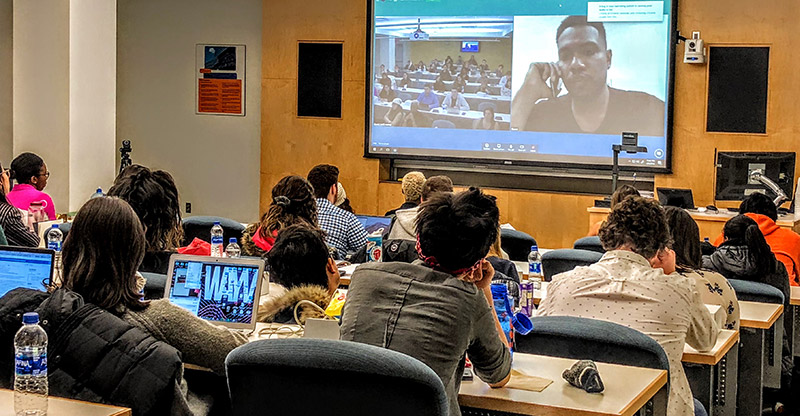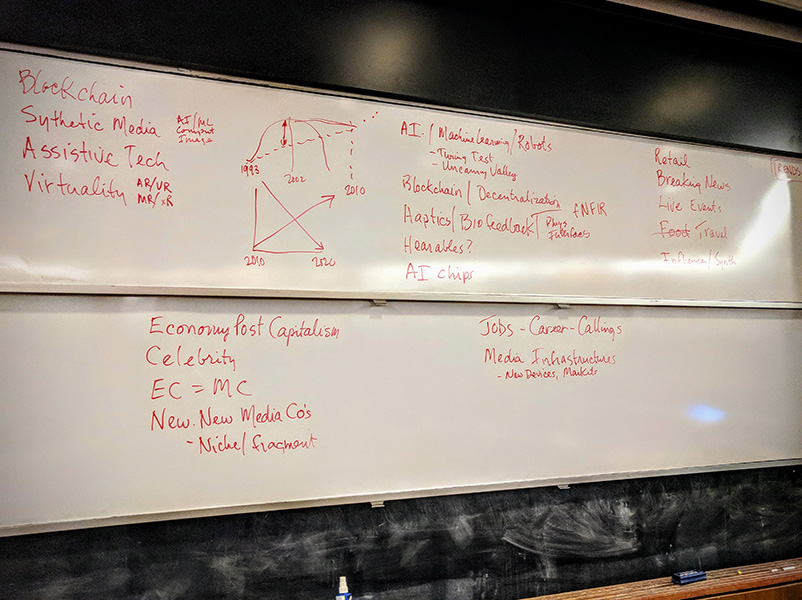 Sean Branagan is a serial entrepreneur, evangelist for startups and innovation, and educator. He is the Director of the Center for Digital Media Entrepreneurship at the S.I. Newhouse School of Public Communications at Syracuse University where he teaches graduate-level and undergraduate courses in entrepreneurship and media innovation. Sean is the Chief Instigator for the Media-Nxt Report on the future of media.
Sean Branagan is a serial entrepreneur, evangelist for startups and innovation, and educator. He is the Director of the Center for Digital Media Entrepreneurship at the S.I. Newhouse School of Public Communications at Syracuse University where he teaches graduate-level and undergraduate courses in entrepreneurship and media innovation. Sean is the Chief Instigator for the Media-Nxt Report on the future of media.
The media industry is high-tech now, and we have to start acting like it. Continuous disruption is the new normal, and innovation is accelerating. Therefore, today’s media leaders need to be tech-savvy and possess an early-adoption mindset. Since 2013, students at the S.I. Newhouse School of Public Communications at Syracuse University have been studying media technologies and trends in a course I teach each fall: Trendspotting in Digital Media. Here, they prepare for modern media careers that demand leaders to take action in the face of uncertainty and be comfortable being uncomfortable.
We talk as media professionals should, knowledgeable of the tech.
New technologies just keep coming into the media world, and our students have been considering and discussing them for years, preparing for a career with them: AI, Voice and Conversational Interfaces, Deep Fakes, 5G, VR/AR, Blockchain, Quantum Computing, Synthetic Media and more. We talk about the applications, the opportunities, the consequences, impacts, and the ethics. We talk as media professionals should, knowledgeable of the tech.

Students from the S.I. Newhouse School of Public Communications at Syracuse University
In 2017, we decided to create a compendium of the technologies and trends we discussed each year in class and publish it for industry executives and practitioners. The result is the Newhouse School’s Media-Nxt Reports, available at Media-Nxt.org. Research for each annual report is conducted by our undergraduate and graduate students — from programs across the spectrum of departments at Newhouse: from Advertising and PR to Journalism to all forms of Entertainment, including sports, music, fashion, tv, radio and film. Then we add a highly curated list of early-stage startups, all in media technologies, so executives can take action with their new knowledge: investing in, working with, or possibly acquiring these startups. In fact, of the 65 startups featured in the 2017 and 2018 reports, eight have already been acquired by companies such as Apple, Adobe, Baidu, LivePerson and Ticketmaster, and 23 other startups have received follow-on funding totaling more than $275 million.

Media Next Concepts
The 2019 Media-Nxt Report was recently released and introduces media executives to synthetic influencers, live social streaming, empathy detection, and a new AR category that has recently emerged: Hearables. We also feature emerging media devices that are showing up in our homes, businesses, and public spaces and discuss some of the content authentication tools that help journalists fight fake news, misinformation and disinformation. And of course we also list 29 new media tech startups to watch.
These technologies, trends, devices, systems and startups provide new opportunities for media companies to act like high-tech companies. And when our students graduate, they are ready to help navigate this fast-changing environment. And one day, they will take their seat at the decision table of these high-tech media companies. Media is now officially high-tech, with constant innovation, increased R&D, endless disruption, mergers and acquisitions, and new skills and roles for media professionals. This is the new normal and our students are prepared for it. And through the Media-Nxt Report, we share some of that learning and look into the future of media. Standing at the front of that class at the end of every fall semester, I cannot fully explain how hopeful and optimistic I feel about the future of the industry that shapes our culture and tells our human story. It’s an exciting time.
The 2017, 2018 and 2019 Media-Nxt Reports are all available for download at Media-Nxt.org

